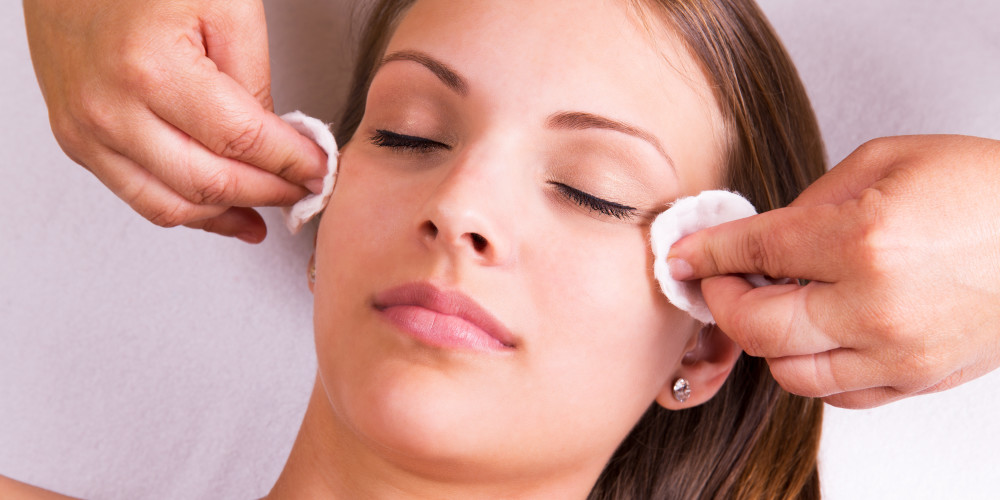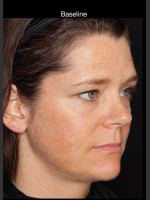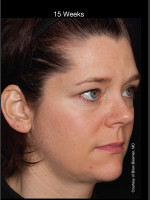Utilize The Rejuvenating Power of Chemical Peels

People frequently take their skin for granted. It's a powerful organ that has amazing abilities to protect and rejuvenate. But between age, sun and the wear and tear of everyday life, our skin naturally loses some of its youthfulness. If you find yourself looking in the mirror and kicking yourself for not having a better skincare regimen over the years, a trip to the dermatologist to discuss chemical peels might be a good move.
According to the American Society of Plastic Surgeons yearly report, chemical peels made the list of top five minimally invasive cosmetic procedures last year with 1.5 million done in 2017.
A chemical peel is a nonsurgical dermatological technique that applies an exfoliating chemical solution to the skin that causes it to peel and regenerate. The procedure is frequently used on the face, neck and hands, and can be used to reduce the appearance of various issues such as discoloration and hyperpigmentation, signs of aging like crow's feet, wrinkles and sagging, scars, blotchiness, melasma and sun damage.
The first step in deciding if you are a good candidate for a chemical peel is taking a trip to the dermatologist. He or she will be able to help you determine which type of peel would be the most effective considering your goals and the condition of your skin.
Different types of chemical peels address different areas in different ways. There are superficial peels (AKA light peels or lunchtime peels) which utilize more mild acids such as alpha-hydroxy acid to exfoliate the outermost layer of skin, addressing mild discoloration and roughness, and giving a refreshed look. With proper care, these take roughly one week to heal and makeup can usually be worn the day after treatment.
Medium strength peels usually take a bit longer to heal- about two weeks- and are associated with more intense recovery needs, swelling and blistering. This deeper chemical peel can combat age spots and more moderate discoloration through penetrating the outer and middle layers of skin with agents like glycolic or trichloroacetic acid.
The deepest peels reach deeper into the middle layer of skin using trichloroacetic acid or phenol, and can help reduce the appearance of deeper lines and wrinkles, age spots, freckles and even shallow scars. After these procedures, the treated area will be bandaged and requires an extensive recovery routine for two to three weeks which includes soaking, ointments and moisturizers, and no sun exposure for three to six months.
For a few weeks before a chemical peel, patients are frequently instructed to stop using retinol products. After the procedure, depending on the strength of the peel, individuals commonly experience redness and some peeling. It's important to be aware of sun-exposure after any chemical peel because of the regenerated skin's temporary hyper-sensitivity to the sun.
Chemical peels do tend to cause a stinging sensation during the procedure. Peels with alpha-hydroxy, glycolic, lactic or fruit acids tend to be gentler, but also more surface level. The types that are designed to combat deeper, more serious problems utilize stronger agents like trichloroacetic acid and can cause a stronger sting.
Chemical peels work the best on people with fair skin and light hair. They are not recommended for individuals with skin conditions such as psoriasis or eczema, cuts, sunburns or infections, and/or those who are nursing or pregnant. Some common side effect include scarring, darkened skin (especially for women on birth control) and reactivation of cold sores.
Especially with deep peels, it?s incredibly important to work with a qualified physician. Your first consultation should cover your medical history, aesthetic and medical goals and various specifics about chemical peels in regard to your individual treatment plan.
At home chemical peels have become popular in recent years, but doctors like Philadelphia dermatologist Dr. Mark Abdelmalek warn that lots of chemical peels advertised for home use shouldn't be used without supervision. The biggest thing to look for is the a concentration of the active acid in the product. With alpha hydroxy acids (AHAs) it's safe to use products with 10 percent or less at home. According to the Food and Drug Administration, a product with more than 30 percent should be used in a professional medical environment.
Chemical peels allow for the rejuvenation for new, healthier looking skin, but it?s done through destroying old tissues. Because of this it?s crucial to be informed about your own skin, the procedures you choose to have done, and who is doing them. But with the right education and preparation, a chemical peel can do wonders at helping you toward young, rejuvenated and healthier looking skin.


